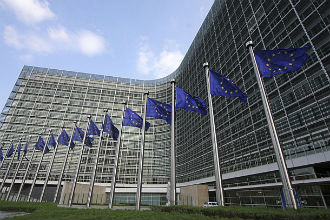 The Blockchain market size is expected to grow from $210.2 million in 2016 to $2,312.5 million by 2021, according to new research.
The Blockchain market size is expected to grow from $210.2 million in 2016 to $2,312.5 million by 2021, according to new research.
Beancounters at Research and Markets have penned the “Blockchain Market – Global Forecast to 2021” report and this shows that at a Compound Annual Growth Rate (CAGR) of 61.5 percent, the market is going to provide lots of new opportunities.
The major growth drivers of the Blockchain market are transparency & immutability, faster transactions, and reduced total cost of ownership, the report said.
The Blockchain market is segmented by provider, application, organization size, industry vertical, and region. The infrastructure and protocols provider segment is expected to dominate the Blockchain market during the forecast period, whereas the application and solution provider is projected to see the highest growth rate due to the increased demand for fast processing applications for payments and transactions.
Payments application holds the largest share of the Blockchain market in 2016. The need for banking and financial transactions has evolved from traditional payments systems to be integrated into new and always connected lifestyle which is fueling the growth of Blockchain-based payment products.
The digital identity market is expected to grow at the highest rate as the Blockchain would make digital identities more secure and efficient, resulting in seamless sign-ons and will reduce identity frauds.
The Banking, Financial Services, and Insurance (BFSI) sector is expected to dominate the market with the largest market share during the forecast period, whereas the media and entertainment vertical is expected to grow at the highest CAGR during the forecast period due to the increasing adoption of Blockchain across smart contracts, document management, and digital identities in the media industry.
SMEs and large enterprises are rapidly deploying the Blockchain solutions. The demand for Blockchain solutions is increasing due to the cost-effective and time-efficient features; its growth is specifically high in SMEs, where low cost solutions are needed, the report said.



















